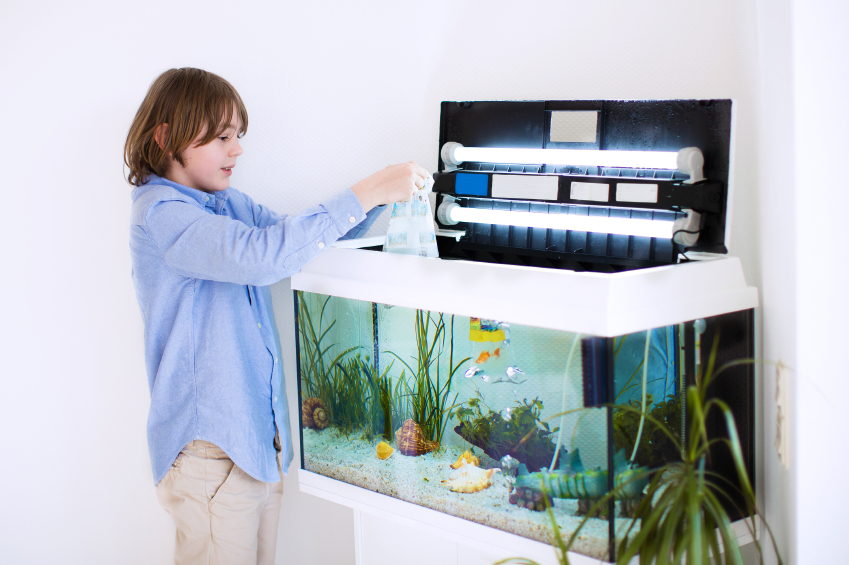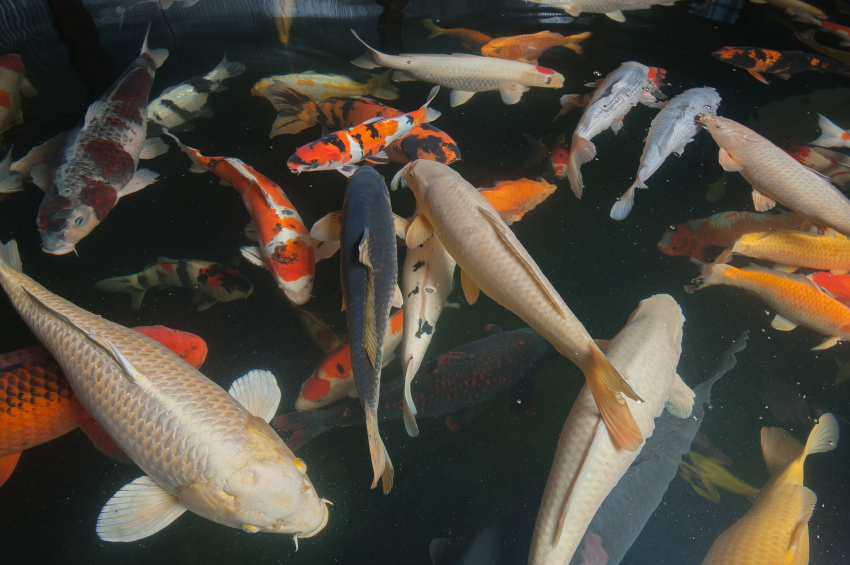Treat cloudy water in aquariums and fish tanks
OVERFEEDING OR OVER STOCKING are the most common causes of cloudy aquarium water. Food residues and fish wastes build up in aquariums and fish tanks faster than can be cleared by naturally occurring colonies of ammonia oxidising archaea and nitrifying bacteria. These colonies are essential for healthy fish and are called biological water treatments. Enviropacs TM boost these treatments.

Tips to treat cloudy aquarium water
1. Thoroughly vacuum your aquarium gravel to remove as much residue as possible including under rocks and ornaments and discard the syphoned water to waste. Unwanted bacteria blooms responsible for cloudy aquarium water often become established in gravel.
2. Cut back on the amount of food and the frequency of feeding until the water clears. Then review your feeding program to alternate days or introduce an automatic feeder when you go on holidays to avoid well meaning helpers unintentionally creating problems.
3. Review fish numbers if cloudy aquarium water persists. The number of healthy fish and other marine life in your aquarium is determined by the size of the tank and other factors including the capacity of your filter, established biological activity that takes time, together with pH, ammonia, nitrite and nitrate levels. Use a reliable test kit and test new tanks daily, then weekly or monthly.
4. Increase aeration times to provide more dissolved oxygen.
5. Add Enviropacs according to instructions on the PAIL every 3 months. These NON-TOXIC granules substantially increase the effective biological surface area of your tank.
6. These granules support large colonies of microbes and beneficial bacteria that consume ammonia and clean cloudy water. Regular use improves water quality and reduces the number of water changes required.
Enviropacs TM added to bio-filter compartments near the foam pads or on top of internal media stones or ceramics, substantially boost the numbers of naturally occurring microbes by providing nutrients and a huge internal surface area for them to grow on. Resulting enzymes consume ammonia and organic material and increase the biological capacity of your system without adding bacteria from other sources.
When establishing new tanks thoroughly wash gravel, ornaments and rocks to remove any fine dust using dechlorinated water and position your tank out of direct sunlight to avoid algae blooms. Use filtered tap water for top ups where excess minerals or phosphates are present in the water supply. Let tap water stand outside for a few days to lower chlorine levels before aquarium use.
Koi and gold fish pond water treatment

You can float Enviropacs TM beneath the pail supplied or place them on the bottom near the returning water supply in koi or gold fish ponds. They clear cloudy or murky water by providing a huge additional sunlight protected surface area to grow beneficial microbes and bacteria that consume fish wastes and lower ammonia levels.
The Enviropacs TM PAIL FLOATING SYSTEM is available in small and large sizes and one or two units may be suspended from the handle in the green polymesh supplied and tethered to shore. Where there is a big build up of sludge, additional units may be evenly distributed around the bottom of a large pond to reduce existing muck from fish wastes and feeding.
They are NON-TOXIC to fish, crustaceans, animals or bird life and may also be used in zoos for natural water treatment with fish, tortoise, penguins, reptiles, mammals, bird wetlands or other exhibits.

